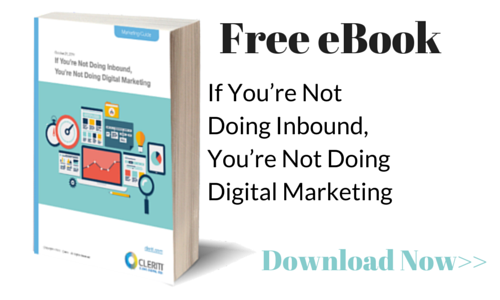- Sep 30, 2015
- By Sarah Tsai
- In Marketing Strategy and Planning
3 Steps to a Better Working Relationship with Clients and Your Internal Team


Recently, I wrote about what I learned during my first month as an Inbound Marketing Manager at Cleriti. As an account manager at a marketing agency, my job is threefold. The number one goal, of course, is to keep clients happy. The second objective is to make sure there is a strategic marketing process in place and that my team is working efficiently and effectively to deliver results in a timely manner. With digital marketing, there is yet a third goal – that is, to make sure we have the right tools and insights to do our jobs well and improve the overall results. I would like to share a few approaches I have adopted that serve these three objectives and drive great results.
1. Stay a Step Ahead of Your Customers
Inbound marketing relies heavily on search engine marketing, analytics and timing to be in front of customers when they are searching for an answer to a problem or researching more information for an opportunity. Who are their competitors? What keywords are they using? Are their buyer personas searching for the resources our team is putting out? These are the questions I ask myself every day on behalf of my clients. I am not trying to be your in-house marketing team, however, when it comes to content, it is my job along with my team to know the customer’s product inside out.
What I have noticed is that I might not get the answers right 100% of the time doing my own research, but asking those types of questions foster a relationship of trust. When your clients notice you going a step above and beyond, they tend to be a little more forgiving at minor errors and a little more willing to engage you in broader conversation as it relates to their business. In a smaller and savvy, nontraditional agency like ours, being able to participate in client’s growth and development means we are strategic partners, not just an “agency of record”.
2. Trust and Empower Your Team
It is tempting to pretend that as the manager, you already know it all, and that the tasks are simply what you “delegate” because you lack capacity to get it done. Yet we all know that this is simply not the case. We all want to work in an environment where each person’s individual efforts are appreciated, their talents are celebrated and together we win as a team.
In this digital age I can see exactly what each person has done any given day. Tasks are logged in project management software. A pretty pie chart shows percentage of utilization. I receive email notifications to remind me percentage of completion of each task and recently I have stopped checking these. Here’s why.
I started to gauge how my teammates are really doing via the old fashioned way of making eye contact and by asking to have lunch with them. It is much easier to have conversations around a marketing strategy and tactics when there is a foundation of trust and reciprocity in the relationship, and not a feeling of a timer, a task tracking system and checklist of tedious work. While it’s nice to organize our work, systems like these can also destroy innovation and collaboration in the workplace. More than anything, I want to enable the team to care about the results they get from doing these tasks. I dusted off an old copy of “The Five Dysfunctions of a Team”, which is a book I read when I was a junior management trainee. After reading the book, I promised myself that I would not make the same mistakes my manager did, which became useful and carried me forward to where I stand today.
3. Use the Analytics Tools Like It’s the First Time You’ve Seen Them
After weeks of using Hubspot, I got fluent, but I also got a little cocky! It’s easy to fall into a trap and think I am busy and getting a lot done responding to client/staff emails and jumping from account to account. But let’s not forget where the rubber meets the road:
- Improve Lead Conversions: How long has it been since you’ve changed out an old call to action (CTA) that is not converting and updated it with a new graphic or tagline on the most popular (or most viewed) blog post to make sure your offer is current?
- Prospecting: Have you compared the list of prospects that are visiting your site with the number of leads you gained in the same time frame to make sure your taking the right steps to convert more traffic? Speaking of prospects, do you have anyone monitoring them and engaging with them on social media?
- Keyword Refresher: Are you current on what you want keywords to rank for organically and how current keywords are performing relative to competitors? Have your prospect’s search tactics changed based on what’s going on in their industry?
- Social Media Insights: Have you checked your social posts lately to see what days of the week and what time of the day gets most engagement? How will you leverage that knowledge to inform how you can drive traffic via thought provoking posts?
My advice is to get down to the basics. By carving out quality time on a monthly or quarterly basis and thinking through the high level marketing strategy and deliverables for each client, I am able to achieve a deeper sense of accomplishment knowing that I took extra steps to plan the deliverables, versus rushing through them.
My “newbie” card quickly ran out of steam and I am now familiar with my client’s goals as well as the dynamics within my own organization that I manage in order to deliver on client objectives. I try to stay focused and positive putting one foot in front of another. I have found that by focusing on each client for an extended amount of time without distraction gets the best results – not just for the clients, but also for myself.





